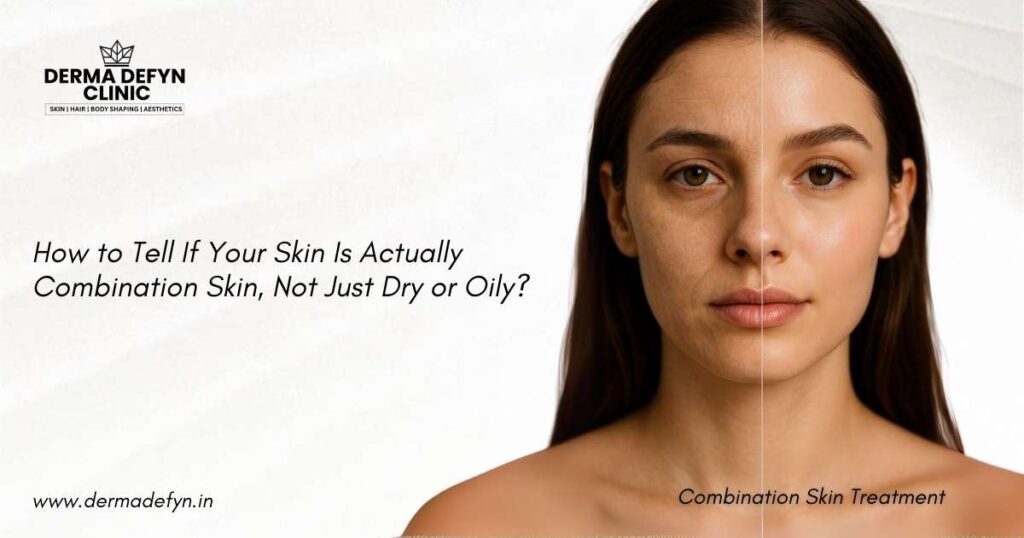Most individuals cannot tell their type, and they are always confused whether they have only oily or dry skin when in reality they have combination skin. It is this confusion that causes the application of incorrect skincare products and routines that may worsen skin issues. The first and most important thing that you have to do in order to have healthy and balanced skin is to understand your real skin type.
What Is Combination Skin?
Combination skin refers to the fact that you have varying skin types in various parts of your face. The majority of individuals who have a combination skin type possess an oily T-zone (forehead, nose, and chin) with the rest of their cheeks and the rest of their bodies being normal or dry. This occurs in the sense that the T-zone possesses more oil glands than other sections of your face.
There are those with a combination skin with some parts being very dry and others very oily. In most parts, other people may have normal skin with one oily or dry patch. The most important thing is that the skin on your face does not act the same way.
Symptoms of Combinative Skin:
The T-Zone Test
Make a close observation of your T-zone daily. When your forehead, nose, and chin are shiny and greasy, and also when your cheeks remain normal or tight, then you have combination skin. The T-zone may also freely form blackheads, whiteheads, or swollen pores compared to other regions.
Another Skin on Your Face
Move your fingers over your face. The difference in combination skin will be experienced in different areas. The T-zone is either rough or bumpy due to excess oil and pores being clogged, and the cheeks are smooth or a bit rough due to a lack of oil.
Makeup Behavior
Be aware of the way that your makeup performs over a day. Like combination skin, foundation can slide or be patchy in your T-zone since too much oil can be present, and it can also be cakey or flaky on your cheeks because of dryness. The various parts of your face may require various makeup styles.
Seasonal Changes
Combination skin usually varies with the seasons. During winter, the dry areas may get drier, and the oily areas will be the same. In summer, oily regions may result in an increase in sebum, and dry ones may get a little better.
Common Mistakes People Make
Treating All Areas the Same
The greatest mistake is to apply the same products to your whole face. Individuals who have combination skin require various strategies in various parts. Applying heavy moisturizers to oil-prone areas will result in a breakout, and applying oil control products to dry areas will result in irritation and flaking.
Over-Cleansing
Combination skin patients tend to over-clean their whole face in order to keep the oily T-zone under control. This deprives the dry areas of their natural oils to cause them to be drier, and it may cause the oily areas to secrete more oils to replace them.
Wrong Product Choices
The selection of products that are oil-based and for dry skin creates an imbalance. Oily skin products may be too rough in the dry parts, whereas the dry skin products may be too dense in the oily parts.
How to Confirm Your Skin Type?
The Bare Face Test
Clean your face using a mild cleanser and dry your face. Allow one hour without the use of the products. Then examine your skin:
- Combination skin: The T-zone looks greasy or shiny, and the cheeks are either normal or tight.
- Oily skin: The whole face looks oily.
- Dry skin: The whole face is tight, rough, or dry.
- Normal skin: Face is comfortable, neither oily nor tight.
The Blotting Paper Method
Wash your face and wait two hours, and then press blotting papers on various parts of your face. On combination skin, the T-zone papers will have oil, whereas the cheek papers will have little or no oil.
Professional Skin Analysis
Proper analysis of the skin can be done by visiting a dermatologist or a skincare expert. To find out your exact skin type and actually what each part of your face needs, they apply special tools and expertise.
Conclusion:
The first step towards having healthy, balanced skin is to realize that you have combination skin. It is important to remember that the combination skin is patient and may need various products in various parts. What works on another person may not be effective on you, and therefore, you need to observe your skin reaction to various products and routines.
Combination skin could be good and healthy with the proper approach. Pay attention to soft, regular treatment, which helps to consider the needs of each part of your face. You will eventually build a habit that will make your oily and dry areas satisfied and content.
Also, keep in mind that skin may alter as a result of aging, hormones, weather, and lifestyle. Be adaptable with your schedule and change when necessary. The aim is to achieve a good, healthy, comfortable skin that is all over your face.
Youtube Url: @DermaDefyn


